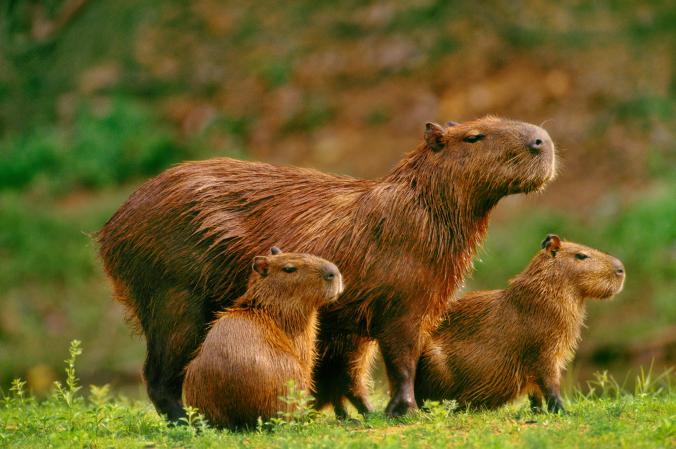The World’s Largest Rodent Might Give us Cure for Cancer
A family of capybaras in in Pantanal, Brazil
October 9, 2018
A recent study in South America conducted by the research team bioRxiv has found that capybaras might be the clue we’re missing to stop cancer.
Preliminary research has found that capybaras have a specific process of check and balances in their immune system that allows them to kill off cancerous cells before they multiply. While other animals have similar systems in order to help prevent cancer (ex. elephants, and Bowhead whales) capybaras appear to have a way of stopping it from happening completely.
Santiago Herrera-Álvarez, the lead study author, started to study the capybaras while he was completing his Master’s at the Universidad de los Andes in Bogotá. He was intrigued by their large size and how they evolved saying, “The capybara is an iconic South American animal.” He was curious as to how a rodent, who’s closest relatives are extremely small, managed to get the size it did. University evolutionary biologist V. Louise Roth explained in an article on National Geographic that rodents are usually smaller because it is easier to hide from predators. In the same article he goes on to explain that when the capybara’s ancestors migrated to South America, about 40 million years, there were no natural predators, allowing their ancestors to grow in size.
Up until recently the exact way the capybaras managed to do this was unknown, but thanks to Herrera’s team it was found that a major reason could be linked to the production of insulin in the capybara. Insulin, along with serving as a blood sugar regulator, is also one of the hormones that tell our cells how to divide. Initially some of Herrera’s team speculated that maybe they just produced more insulin, but further research found that Caviomorphs, the subgroup of rodents that contains capybaras, appear to have a specific type of insulin. It appears that they have an specialized way to tell their cells to divide.
The normal correlation is that since every cell has an equal chance at becoming cancerous the larger the animal the larger the possibility of cancer since more cells are dividing, but this is not the case. As stated before elephants, whale, and capivaras all have ways of preventing cancer even though they are generally large animals. This goes against what would statistically make sense and is known as Peto’s Paradox. This made Herrera curious as to why this was happening with capybaras and he found that the capybara has an immune system that specifically targets cells that are growing rapidly. It is basically its own form of immunotherapy.
Herrera says, “I was very surprised. I wasn’t expecting that the immune system might be involved.” Vincent Lynch, an evolutionary cancer biologist at the University of Chicago said, “What they found seems really different from what happens in other animals,” and going on to say that “Maybe it’s not as hard as we thought to evolve these anti-cancer pathways.”
Although both Lynch and Roth praise Herrera for his team’s findings they caution to not jump to conclusions giving that this is just preliminary research. Also recently some capybaras in captivity appear to have certain types of skin cancer. Jersey a capibara in the John Ball Zoo in Grand Rapids, MI had a cancerous mass on its right rear foot. Furthermore another capybara in Japan had malignant squamous cell carcinoma on its buttocks. Although the capybara in Japan had other health issues such as reacurrent dermatosis, and cancer in capybaras is very rarely seen these specific examples particular, Jersey in the John Ball Zoo, show that like all things in the world this solution is not perfect. With that being said, Lynch and Roth along with Herrera are all optimistic for the meaning of this in future cancer treatment.


